Wayne C. Allen's Blog
October 3, 2025
Have your emotions. Act responsibly in spite of them.

“Have your emotions” is a Ben ‘n Jock-ism, and a common expression at The Haven. It is an interesting concept, and one that many people miss.
Bodywork Training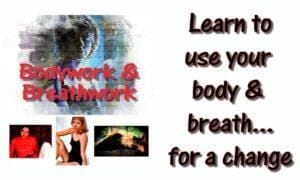
PDF downloadable book and online videos. More info here.
Emotions are experienced pretty much from birth, as anyone who has seen a red-faced infant screaming at the top of her lungs can attest. The infant’s emotion lacks meaning. It also “just happens.”
Let me try to explain how this works.
The chief aim of the first 14 years of life (or so) is socialization. This simply means that the tribe and culture of the child teaches the child what things mean.
Let me hasten to add that this is not about what is ‘true.’ This is about what the tribe holds to be legitimate.
Thus, some groups think ‘a’ is acceptable, while another group adamantly rejects ‘a.’
Emotions arrive unbidden. Infants / children experience them without the filters later applied to them. Soon, the tribal ‘take’ on each emotional state is force fed to the child.
“Big boys don’t cry.”
“Sugar and spice and everything nice…”
“What have you to be angry about?” or “I’ll give you something to be angry about.”
“If you keep pouting your face will freeze that way.”
You may think that this is unimportant, but I can guarantee that you have a whole list of internal and not-thought-through ‘rules’ about emotions.
Some emotions, (happy, giggly, content, perhaps moody – what most people would think of as the ‘positive’ emotions) are considered ‘expressible’ in most circumstances. Anger, grief, and emotions thought to be ‘negative’ almost always come with proscriptions against their expression.
Let me be clear: I am not making ‘socialization by tribe’ a bad thing. It’s required. Otherwise, we’d all be laying around screaming and pooping our diapers. (Like the orange TACO.) I’m simply suggesting that emotional expressing comes with baggage, and the baggage is all about repressing the ‘bad’ ones while demanding the ‘good’ ones.
I often encouraged my clients to act out their anger by smacking their bed or couch, while yelling in colourful language. I also encouraged my clients to make noise during Bodywork.
This can be quite disconcerting for many of them. They report hearing mom’s or dad’s voice, letting them know that expressions of anger or sadness or grief is definitely not OK.
The reason it’s “not OK” is that such emotions made mom and dad uncomfortable, so they did what they could to get their kid to repress and distrust noisy emotions.
And they were uncomfortable because of what their parents told them, and on and on.
All adults have a built-in critiquing system regarding both their emotions and the emotions of others.It’s interesting to watch people seeing Bodywork for the first time, when it’s done in a group. The person receiving may, for example, start shouting and pounding the mat. Some people physically back up. Others get pale and look stricken.
The vocal ones demand that the recipient stop yelling, either from an “I can’t stand that” perspective, or from a more new-agey, lame, “That is violating my personal space.” The message is the same: I have no tolerance for the negative emotions of others.
I repeat, we have learned this behaviour at the knees of our tribes. To which I respond, “So what?”Emotions need to be expressed. Period.
Safely, cleanly, and under some time constraint, but expressed none-the-less. Stuffing emotions does no good—from a Bodywork perspective, all that happens is that the blocked emotions finds another way out.
The article title suggests the concept of responsible behaviour. When I taught this approach to clients, the first thing I worked toward convincing them of was the idea that emotions are things one has.
Emotions are not caused by externals.So, no one ‘makes’ me angry (or anything else.) People do whatever they do, and I anger myself (or sadden myself, or amuse myself…)
Once you get this, you can do the responsible thing, and ‘own’ your anger. From there, you can choose to safely and cleanly express it.
To do so, you will have to recognize that your upbringing will have taught you to stuff this expression, so you ’ll have to ‘do it anyway.’The other part of being responsible is ‘aiming’ the emotion at an inanimate object. I therefore do not yell at Darbella, for example. I invite her to be a witness as I yell at a chair, a tree (we used to own property—I’d stand naked in the hot tub and yell at the trees in the woods—a sight to behold!).
Perhaps I may also want to pound a heavy bag or the bed, or the seat of a chair.
The idea is to ‘have’ the emotion. Not justify the emotion, explain the emotion or blame someone for the emotion.
Have it. Express it. Move through the emotion.Back to people in groups watching this work. In almost all cases, one time of seeing someone get really angry at a chair or a pad, and seeing that the sky did not fall, is enough to convince the observer that expressing anger in this way is safe and OK.
This applies, of course, to all emotions. When sad, one cries. When in need of support, one asks for a hug.
All of the problems with emotions go away when I accept responsibility for my emotions. They are mine, I create them, and I ask for space to express them.
Look at what you are stuffing, repressing, and denying as far as your emotions go. Have a chat with your nearest and dearest, and work out a mutual “have your emotions” pact. Find responsible, honest ways to own and express your emotions.
Your body, mind, and spirit will thank you!
September 14, 2025
On Waking Up — Infinite Choice

Infinite Choice — blaming, holding on to grudges, all keep us stuck. Letting go opens the door to choice
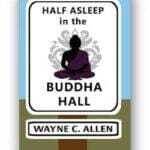 Looking for more on this topic?
Looking for more on this topic? 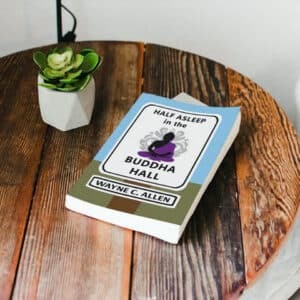 Check out my book,
Check out my book,
Half Asleep in the Buddha Hall.
My “Eastern” book takes you by the hand and helps you to find peace of mind.
Half Asleep in the Buddha Hall is a Zen-based guide to living life fully and deeply.
Our minds are slippery things. We have the quite necessary ability to link or chain events together — it’s how we know, for example, not step in front of a speeding bus, even though our only close call was with a speeding car.
The problem comes when we link together things that lead us in difficult directions.Here are a few examples from long ago:Case 1: A client experienced a depression. After some months, it lifted. She spent months walking on tiptoes, lest she fall back in. She assumed that there was only one way to deal with depression. Her assumption is that she can only survive (she hopes) a depression… the idea of exploring it for its lessons is scary. She though there was no choice other than what she did the first time.
Case 2: A couple with adult children (the “kids” were in their early 30s) were fighting over how to get them to behave differently. Except that mom wants one thing, the dad another.
The kids had their own lives and did what they want.
This was not acceptable to either parent. They both told me, “They’ve never listened!”
They wanted me to make the kids listen — and the kids were not there.
When not being angry about the kids not listening, they yelled at each other about who is right. They were caught in repeating the past.
Case 3: A couple had been married 12 years. They weren’t talking much, nor doing much together. This, they told me, was because,
a) his dad died 2 years earlier,
b) her mom died 1.5 years earlier, and
c) she had surgery 6 months ago.
They live in the past, with regret.
I always asked what each client wanted from therapy. Invariably, I was told that the client wanted to have a successful relationship, career, or family — to be happy — to have the drama stop.
If that’s what they want, how come they’re so successful at not getting what they say they want? How come it’s the same drama, again and again?It’s like horses and blinders. You put blinders on, and all you can see is what you are looking at.The odd thing is that “everything else” exists, and it’s all “right there.” All possibilities exist simultaneously. It’s called choice. Just because you choose not to notice does not make choice go away. The only issues is this: change takes effort.
Our world is rapidly circling the drain, and it’s because people are happy being victims and blaming othersMany moons ago, I wrote a free booklet called, Building a Responsible Relationship. In it I uses the concept of the dirty clothes drawer. I repeated this analogy in Half Asleep in the Buddha Hall
The analogy: This dirty clothes drawer is where the stuck stuff is kept. It’s filled with failures, accusations, and tons of stuff that has never worked.For many people, this is an important drawer When bored, they sit alone in their dimly lit rooms, and fondle their dirty clothes. Each in turn is removed and examined. Each triggers a story of “poor me, hard done by.”
Each story, each drama, is magnified — each is made grander — more significant — while adding a layer of “I have no choice!”
Entire lives are wasted, as they sit in dim rooms, fondling smelly clothes.
Leaving the dirty clothes pile takes effortThe person states she wants a good relationship. However, she yells, the good relationship is not going to happen until her partner has paid in full for every sin, real or imagined, that she perceives her partner has committed. Or, things are not going to change until the system (he University, the job, the kids, the depression)) changes.
Nothing is clean, fresh, new.Each thing that happens is added to the contents of the dirty clothes drawer, whether it has anything to do with the contents or not.
And just as people are capable of coming up with the oddest combinations of clothes from their closets, the combinations of “present event” and past “dirty clothes” are breathtaking. As you’d expect, given that the drawer is filled with 10-year-old funky memories.
 Looking for more on this topic?
Looking for more on this topic?  Check out my book,
Check out my book,
Half Asleep in the Buddha Hall.
My “Eastern” book takes you by the hand and helps you to find peace of mind.
Half Asleep in the Buddha Hall is a Zen-based guide to living life fully and deeply.
I’d much rather hear, “I’ve been tucking this stuff away for years, and hell will freeze over before I let anyone off the hook for any of it!”
Or, “This hurts like hell, but I’m going to choose a different behaviour, starting right now!
That’s the one that makes the difference, when coupled with follow through.
All of this requires really letting go of what doesn’t work. Letting everyone else off the hook, and choosing how to live is not a one time for all thing. You can’t go back to what didn’t work and expect different results. You can’t give up blaming, except for this time.
Choosing differently means every timeSome people tell me this is too simple. That the contents of the drawer need examination — there needs to be blame assigned, and they want me to help.
Let me say this plainly: I’m not in the least bit interested in why something is in the drawer. I’m not interested in what excuse you use for keeping it there. I don’t need a long explanation for why you dig it out and try to throw it at someone.
The answer, to me, is simple. Stop blaming others (or yourself) for your misery. Let go of everything you insult yourself over.
During my 32 years of private practice, I watched some (a few…) people hear me spell out their game, and then immediately and simply choose to stop doing whatever they were doing, without making a decades long problem out of it.
As an amusing side note, I counselled several therapists over the years, and none of them pulled this off. OK for their clients, but…
Everyone can get over himself or herself, right now. No exceptions. The only question is, will you?
To say, “Well, maybe other people can, but I can’t,” is to say, “I won’t, because then I’d have to give up being special. I’ve earned this pain, and I’m going to keep it.”
That, emphatically, is not the same as “I can’t.”
Which begs my question, “If you want a contented life, why do you keep doing the very things that screw it up?” Why not be honest and say, as I noted above, “I’ve been tucking this crap away for years, and hell will freeze over before I let others off the hook for any of it!”
Or, you could get over yourself!
With honesty, there is choice. I’m done making lousy choices. I’m going to explore (both alone and with a therapist) other ways of being and doing, let go of blaming, and find a more elegant way of being.”
This, I believe, is the far better choice.
Facebook TwitterAugust 26, 2025
On Waking Up — The Attack of the WhyBut Monster

Why and but are stop words. They are useful for getting us off-track, as we pretend to be working on our issues. Uttering either means that you are stuck, pure and simple.
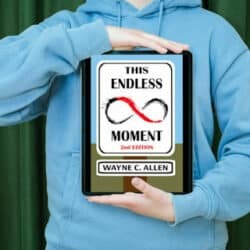
An excellent guide to life and living.
Learn to focus your attention of who you really are.
Read This Endless Moment now!
So, here’s a recent question:Hi Wayne I’d love you to write a post with a bit more detail on how we use ‘why’ to stay asleep. I do get the irony of asking you to explain why we ask why! I used to be very much a why girl until recently. I saw how much needing to know why stopped me from taking action. I finally realised we don’t have to know to move forward. From Jane
Let’s talk about our brain patterns. Brains use a ton more body energy than their weight — as compared to the rest of the body — so brains developed habits to use less energy.
A habit, a way of being, is an energy conservation deviceThe problem with habits (habitual patterns of thinking) is that, without effort, they are “invisible.” We might be spending 80% of our day going through the motions, and all of it is habit.
Which is why Zen is so adamant on “When washing dishes, wash dishes.” Such a focus frags us out of auto-pilot — we begin to be present — to pay attenton.
OK, so next step — thinkingMost humans think that thinking is really, really special. Now, sure, our ability to self-reflect separates us from most other animals, but we have to be careful here.
Constructive thoughtThis is what we were taught to do in school. How to think through a problem — say in math, or science — we know it as the scientific method. It involves starting where we are, applying rigorous criteria, and pushing ourselves to the next level.
Obsessive thought
Here’s where the WhyBut monster rears it’s ugly head(s).
Obsessive thought is re-hashing what we’re doing, complete with a large dose of self-criticism, in order to conserve energy — in other words, to stay stuck.
Seems counter-intuitive, but actual thinking is energy-intensive. Staying stuck while running a “whybut” tape is like putting a song on endless loop. Click. Done.
Staying stuck is easy. If you just stand there, knee deep, or deeper, in the muck, you are expending zero energy after the first “click.”
Getting out requires massive energy. Even taking one step — massive energy. Last article, I listed off thought patterns for both “why” and “but.”
but, but, but…In reverse order, “but” has to do with thinking things through to the point where a next step is obvious, and then racing to the well of excuses.
“But it’s not the right time.”“I know what to do, but I don’t have the energy.”“But I can’t act until I know the outcome.”So, what’s the point?Staying asleep, safely ensconced in the silken strands of our cocoon, is all about the safety or predictability.
We don’t act because we fear where we may end up. We fear catastrophic loss — and we fear that where we end up will be terrible.
And we judge ourselves for not acting, as our egos love the sensation of powerlessness and frustration.
Yet, the ego’s fear of change (and it’s use of mental scare tactics) is not based in fact. That said, the fear is “real.” Visceral. Until we get a hold of ourselves and give ourselves a shake.
It boils down to the simple truth that what we imagine and what is real is never the same.Real is right in front of us, and imagination is filtered through our fears (or desires.)
“But,” you say, “you can’t be too prepared.” And I agree, so long as you are preparing, as opposed to fantasizing about preparing. Otherwise known as scaring yourself. Anything that gets in the way of doing is an issue.
Why-ningI just coined that word, as that’s what it sounds like. The other illustration from last week is the “why” pattern. This one is less about making excuses than it is about delaying acting, preferably forever.

I had many clients who were expert why-ners. They could teach College level classes.
When pressed, they’ll come out with, “Until I know why, I can’t change things.” Which begs the tongue-in-cheek response, “Why not?”
Asking “why” has all the trappings of the scientific method. Except for the missing part — doing something. And we’re right back to the cocoon — safely wrapped up, going nowhere.
So, why is asleep so popular?It’s everywhere. Consumerism is built upon it. Dis-satisfaction sells us products — we feel bad, we think we’re stuck… and an ad tells us we’ll be oh-so stimulated by a new car, be able to do anything with the the right tampon, that all our tomorrows will be perfect after a change in government.
Sadly, “it” never helps for long, because all we’re doing is shifting externals. How easy for the the advertiser: “Do the minimum to change something external to yourself, feel better for a bit, line our pockets, and we promise to suggest something new next week!”
We confuse acting randomly, or out of desire (“I’m sure that finding a new husband will do it for me… this time!”) with taking responsibility for acting in ways that match our sense of self.Remember: asking why, or sitting on your buts, is what we’ve been taught to do. It passes for progress, for making an effort — we think, we assume we can live by figuring things out. And yet, without actually doing something, you’re stuck in your head, going around in circles.
The only way out is action.A “but” friend lists off 10 things she could do differently, and then says, “… but I’m too tired to act!”
She knows! It’s right there. Do something different. Get off her butt, and her buts.
A “why” friend is feverishly running all over the world, looking for the right place, and Mr. Right. Spending money, taking courses, and thinking that if only she moves physically, somehow her inertia will be overcome, and “…things will start happening.”
She misses that her mental gymnastics are depriving her of actual experience. And moving (locational enlightenment) changes nothing — 6 weeks later, her baggage will arrive, and she’ll simply be stuck in a new location.
Running away, you see, is not the same as actually doing something. It’s sad. She too knows what she needs to do. And she stops herself with endless questions. Doubts, uncertainties.
Waking UpWaking up requires unfolding action. Waking up is about seeing clearly what is “right here,” and choosing to immediately act in response, which flies in the face of our world’s monumental attraction to inertia.
“In the country of the blind, the one eyed-man is king” — Erasmus
Even a little action (like one eye) sets one apart from those who do not see — the asleep — those living on auto-pilot.
It does no good to try to explain any of this to those who choose auto-pilot. Waking up requires one thing — recognizing that there is no “right path,” no “right destination.” No, we are not here to fulfill our destiny, to accomplish some “fixed something.” We’re here to be alive.
To liveThe more fully alive we are, the more we see and hear, and the more possibilities open up in front of us.
Most refuse to believe this, and refuse to experiment by living differently.
I once said to a friend, “Here you are, standing at the banquet of life, and all you ever eat is garbanzo beans.” (She tended, despite a myriad of opportunities, to sing the same, sad song, and refuse to change her actions.) Garbanzos, with a banquet surrounding her.
Living is savouring, tasting, experimenting, opening. And, when necessary, fighting.In this pool of active living, what to do next is clear. You’ll know it, as clear as day.
Here’s what to resist: immediately asking “why,” trying to figure the rest of your life out, or “but-ing” yourself into submission.
It’s a hard sell, suggesting that the only thing we need to do is the next thingThere is no grand plan, and actions are always one-at-a-time.
Life’s like that — example: despite having my name on several books, I’ve never written a book. I’ve written words, sentences, chapters, over time, and all of that eventually coalesced into a book. It would never have evolved into a book without slow, steady action.
Or, it’s like this article. 1 hour in, I’m almost done. I had no idea, other than the WhyBut topic, where I was going, or where I’d end up. I wrote it anyway, word by word, moment by moment.
This is the key — to do what you choose to do, right now. If you are sitting there, stuck, do something. Get up, wiggle yourself, go interact with the world. Paint. Write. Walk. Run. Wash dishes.
And your life will come into being, as you enact it, moment by awake moment… Better than being eaten by the WhyBut monster.
Facebook TwitterJuly 28, 2025
On Waking Up — Awake as Compared to Asleep

On Waking Up — Awake as compared to Asleep It’s hard to admit, but our lives are mostly lived on autopilot. While there are plenty of reasons for “sleeping while awake,” (brain efficiency, etc.) the main reason we do it it is that we fear the work being awake entails.

My first and most popular book,
This Endless Moment.
Learn to live a full and satisfying life.
1. I’m hard on myself.
2. I judge myself for being hard on myself.
3. I try to talk myself out of it, and then get down on myself for not being able to stop.
4. I want to change, but it’s hard.
5. I’m just lazy.
6. Wash, rinse, repeat.
While there seems to be a fair amount of self-reflection going on here, if you look at the pattern, you see that everything is being run, rapidly, through the same filter.
It looks like self-reflection, but nothing changes, because mind-games are nothing.
Another friend:1. I’ve spent 12 years looking to others to tell me who I am and how I am doing.
2. I need to figure out why I do this.
3. I keep doing it.
4. I’m miserable because I can’t; figure it out, and I can’t get others to stop telling me who I am.
5. I’m so excited because someone told me I’m special! I want to do what they do!
6. But what if I’m no good at it? People will judge me!
7. Wash, rinse, repeat.

The danger for these two women (and the resow of us…) is thinking that all of this effort at exploring “the small, tight box” is actually a mark of being awake.
“I can’t understand why it isn’t different this time!” is a weird thought when all that is happening is a re-hashed pattern. The topic being re-hashed changes, but the pattern applied is the same.
It takes incredible alertness to notice this, and incredible courage to make another choice. And then to make that choice endlessly, until you die.In Eastern thought, being awake is a state in which the person focusses on allowing thoughts to drift along. seeing what arises, without latching on (grasping.)
We are interested in observing the interplay between what the mind thinks (the stories we tell ourselves) and what is actually happening. The greater the correlation between the two, the more awake you are.
On the other hand, having the mind go one way and “life” another requires endlessly being asleep.A couple of examples: (somewhat lame, but hey…)
Perhaps a decade ago, I had a headache… and I needed to make a bank deposit, including depositing a US cheque.
I decided to deposit the Canadian currency at the ATM, then go to a teller to convert and deposit the cheque.
My head hurt a bit, and I was “non-present.”
I was not “zoned out.” I ran the bank machine flawlessly, right up until I stuck the cheque in the envelope with the cash, and shoved it into the slot.
I then stood there for a moment, looking for the cheque. Sigh.
Which matches the pattern for most of us.Few of us are totally incompetent, zoned out, completely lost in the fog. Most of us are functional. However, and it’s a big however, most of what we are doing is not actually conscious. It’s like driving to work, getting there and not knowing how.
Functional, but not mindful.
Example 2
2 decades ago, I was driving up to my office in Port Elgin, and decided to stop at Timmie’s. (Canadian reference, for a Tim Horton donut shop — of which there is one, or one like it, on every corner of every intersection in Canada — we do love our donuts.)
I was listening to an audio book. I pulled into the lot, parked, got out, said hi to the nice lady I passed, and made it the 50 feet to the door of the shop, when I heard, “Hey mister. Your truck’s moving!!!”
I quickly registered that she might be talking to me, as I, indeed, drive a truck. I whipped around, and there was my truck, heading backwards through the parking lot. Standard transmission, and a flash that I must not have left it in gear.
OK. There’s the mindless part. Now, the mindful piece.I took off running across the lot, covering the 60 feet pretty quickly for a then 50-year-old. As I ran, (much like when you are falling — there’s a certain slowness to time, and clarity) I thought about what I was going to do next.
I eliminated running behind the truck and trying to stop it — dopes get run over that way. Couldn’t grab the front bumper and stop it — it weighs more than me. That left getting in and applying the brake.
Now, I come from Buffalo, via Chicago, so even after 25 years in Canada, I lock everything.
So, as I ran, not missing a step, I extricated my keys from my pocket, picked the right one, and caught the truck. I ran alongside, shoved the key in the lock in one try, turned the lock, pocketed the key and opened the door. I then sped up my running, pivoted and vaulted into the seat, not whacking any portion of my anatomy.
I applied the brake. The truck had traveled about 50 feet back.
I drove it back to the parking place, left it in gear and turned it off. The lady was still standing where I’d passed her, on my 100-foot dash. She applauded.
Me too.
Being awake requires one thing, and one thing only: to wake up.If you stand there, metaphorically focussed on the rolling truck, you end up with a mess. If you see what you are doing, and notice that every time you do it, you get lousy results, AND continue to do it, you deserve your fate.If you confuse “figuring it out” with actually doing something, you’re going to end up in the same place. If you expect to be able to keep doing what doesn’t work, and get different results… well… you know.Being awake is all about noticing everything, and realizing that what is happening in your life mirrors what you are choosing (including choosing to, at some level, place the cheque in the envelope…) then you’re on the way to solving your issues.
That’s the hand you were dealt. What you choose to do next is always optional.Being awake is seeing clearly what’s right in front of you, making a clear choice, and implementing. No excuses, no, “It’s hard!” Of course it is, until it isn’t — just like everything else you’ve ever learned.
There’s no escaping the truth that who you are and where you are is endlessly determined by what you do, and what you do, without effort, simply mirrors your worst story.
Have a breath, sit down, learn to focus in through meditation, and then… do something different, just to see what happens.
Facebook TwitterJuly 14, 2025
The Finger That Points to the Moon…

The Finger That Points to the Moon… — our internal representations are neither real, nor necessarily accurate.
 Looking for more on this topic?
Looking for more on this topic?  Check out my book,
Check out my book,
Half Asleep in the Buddha Hall.
My “Eastern” book takes you by the hand and helps you to find peace of mind.
Half Asleep in the Buddha Hall is a Zen-based guide to living life fully and deeply.
“Truth has nothing to do with words. Truth can be likened to the bright moon in the sky. Words, in this case, can be likened to a finger. The finger can point to the moon’s location. However, the finger is not the moon. To look at the moon, it is necessary to gaze beyond the finger, right?”
Ah, those Zen masters. It’s clear that much of what they discuss, usually in response to a question – is the unreality of what we call reality. Or better put, the unreality of our descriptions, beliefs, and stories.
A more modern way of putting this is that reality is subjective.If you think about it, pretty much all the conflict in the world, now and forever, is a fight over whose picture of “whatever” is the correct one. This is so no matter how big or small the disagreement.
It’s the basis for psychotherapy — the client’s version of the story isn’t working, so they head off to the wise therapist for a version correction. As if the therapist’s version is any more correct.
Wisdom has a lot to do with letting go of stories and perceptions, and engaging directly with “the moon.” This is engagement unvarnished by long-winded defenses or explanations.
Yet, many are the people who will spend hours and hours arguing about the validity of their perceptions, despite the fact that the results they are getting from using those perceptions clearly and plainly suck.
I describe this as “whacking yourself in the head with your own mallet.”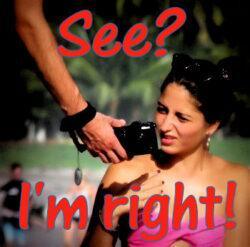
A story occurred to me: some years ago, a client presented the following: his daughter wasn’t living her life the way he wanted her to, and after the last fight, they hadn’t spoken for months.
He listed off what she was doing that he didn’t approve of, and said that no matter how much he insisted, she kept doing them.
I responded, “All of the things you want your daughter to do are perfectly right. However, they’re appropriate for a 14-year-old. Your daughter is 31.”
He got this odd look on his face for a moment, then said, “Well, that probably isn’t going to work.”
Here’s the finger-pointing part: when he pictured his daughter in his mind, he saw a young woman perpetually in trouble, and perhaps more significant, perpetually 14. He was therefore locked into “dad of a delinquent 14-year-old mode.” His subsequent behaviour perfectly fit that role.
Thus, his “finger-pointing to the moon” was perfectly accurate within its own context (in his head.)
It just wasn’t pointing to anything other than itself.That’s really the point of the expression under consideration today. It’s like raising your hand to (apparently) cup the moon and believing that you actually hold the moon in your hand.
We act as if the representation we make in our minds, (about pretty much anything,) is the actual reality of the topic at “hand,” as opposed to our imagined representation.
Have you ever sat in one of those business meetings where everyone is “trying to reach consensus?” So, be honest. Aren’t you sitting there, and inside, thinking, “What the hell is the matter with these people? Why don’t the get this? My finger, pointing, is just so obviously the same as the moon! And they dare to challenge me with theirs?”
We waste inordinate amounts of time trying to get people to agree with our internal representations.
Every time I hear someone say, “This is how it is,” I have a pretty good idea how it isn’t. If it were that way, there would be no need to explain it or try to convince anyone.
That’s really been the point of the problems with the 2024 election in the States. (And of course, this is my finger, pointing…) Little Donald’s angry tweets, for example, are provably “wrong” — have nothing to do with reality — and yet are agreed to by millions. Not as facts, but as “I just feel it and believe it — and now I’m going to stuff it down your throat.” And this is the basis for how he’s running a country.
It is simple arrogance that causes us to think that our opinion should be important to anyone other than ourselves.One of the ways past this is to change our language.
Rather than declare my “finger-pointings” — my opinions — as being true, I simply say, “Here is the story I am telling myself.” This acknowledges that everything I believe is an invention.
Reality, on the other hand (the moon) is “that with which I engage.”
Reality is a 31-year-old daughter sitting across from her dad, and dad dropping the rant, and simply conversing. Not convincing, conversing.
As we explore our world-views with each other, the discussion ought not be about “right and wrong.” Our interpersonal disagreements are simply conflicting opinions. Rather, our discussion might turn to how we are going to “work” with each other: “How is this working for me, and how is yours working for you?”
If I am treating my 31-year-old like a 14-year-old and she doesn’t like it and isn’t talking to me, I can keep doing it in hopes that she sees the light and starts acting like a good 14-year-old, or I can ask myself how I like the results of my actions.If my goal is to dominate my daughter and keep her under my thumb, I want to keep doing what I’m doing.If I want to set up an adult-to-adult relationship with her, I’m going to have to change my behaviour at the least, and I would be wise to change my internal representation of her from 14 to 31.In the end, it’s that “simple.”
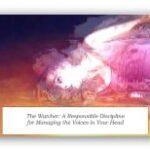
Some years ago, I wrote a booklet called The Watcher… it’s about dealing with depression and other annoying voices in our heads. I decided to expand it. The booklet is 99 cents! You can use the same plan included in The Watcher to work on any “voice in your head.” Just click here!
What are your internal representations? Can you own them as your personal property — not something to be “sold” but “simply yours?”
Wisdom and “truth” is about getting over trying to manipulate others into to doing it your way, while resisting being manipulated into doing it their way. From there, you can check how well your representations are working for you, and look for ways to change the ineffective ones.
Representations are just that. The finger that points to the moon is not the moon. Simple, eh?
Facebook TwitterJuly 3, 2025
Thoughts on Letting Go

Thoughts on Letting Go — letting go is all about learning what you can control, and what you can’t. And not whining about it.

The. Best. Relationship. Ever.
Here’s a quote from Susan Campbell, a California therapist and trainer. Back in the 80s Susan worked with Ben & Jock; she had a hand in the creation of their Communication Model.
It’s about control.“Basing our self-esteem on the ability to control people and events actually keeps us feeling out of control.”
And coupled with that are other buzzwords: “powerlessness,” “can’t control another,” “not to fix,” “outcomes,” “regulate.”
One of the goals of therapy is helping people to learn the difference between what is possible to control and what is not. The best way to do this is to introduce them to their own skin, so that they start working only within that wrapper.
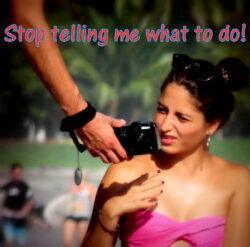 Here’s a “truth” for you:
Here’s a “truth” for you:When people attempt to “control” — attempt to exert influence either on the world around them or on the others who occupy the world — they do so to push back their fear of irrelevance, meaninglessness and death.
This is not to say that we admit to our games.
No, we point fingers; we blame:
“But… but… it’s my (marriage, business, relationship, job, family) and I “should” be able to control what happens!”“But… but… I’m special! Everyone knows how special I am, and if they don’t, they should! If they really loved me, they’d want to make me happy by doing it my way!”“But… but… I’m here for a higher purpose! Why is the world thwarting me? I’m only trying to make it better for everyone!”In other words — we lie, we deny, we cheat, we play manipulation games, we pout, we whine — and boy do we complain, all because the world will not cooperate in our attempt to get others to give our lives meaning.
What we conveniently forget is that all the other people in our lives also have lives… and they want us to give priority and meaning to theirs.
Everyone is “Waiting for Godot” to come along and make it all better. Life will be fun and things will get done, when all the external ducks line up and stay that way. And we wait… and we wait.
And then we die.The key is learning about external vs. internal control.
External always requires the cooperation of another thing or person.Internal is where I have a modicum of control. I can look at my methods of interpretation and my actions, notice which ones are working for me and which ones aren’t — and I can “work” on the ones that aren’t. Any other route is a sure path to disaster.To assume that I am here to “make” other adults behave according to my pre-conceived notions of how they should behave is both arrogant and naïve. (Notice that this is what the man-child Trump is trying to do…)
If I assume that other adults should put my needs ahead of theirs — either because I am more powerful or more needy than them (more special) — then I am both egotistical and foolish.
Paradoxically, however, unless I retreat to a cave, all my actions and life are lived both “in here” and “out there.”The question, then, is not an either/or one, but rather a question of how. For me, I see the approach that works as:
In many respect, this simply means getting out of the way.“A rigorous, self-responsible, self-discipline coupled with honest communication and a willingness to let others be equally self-responsibly self-disciplined.”
I am free to express my opinions, attempt to influence situations and others, and to state consequences for “failure to perform.” If, for example, I am someone’s boss, I have the right to expect a certain level of performance from an employee and have the right to fire him / her / them for non-performance.
But here’s the key: I am silly if I connect my feelings of self-worth to another’s compliance.To go back to my internal vs. external comment: what we’re talking about is the acknowledgement that my internal representations of the world are just that — mine.
The “non-functional” frame is all about treating others as “things” to be fixed. This frame of reference can be restated,“I know better than that object over there how it should function in the world.”
Now, if I am talking about a refrigerator, in general I do know better than the refrigerator what it ought to be doing. I once remember having a refrigerator in an apartment that got stuck on defrost. When I opened the door, everything had melted and liquids were well over 100 degrees F. Pop bottles had “popped.” There was oozing stuff everywhere.
Needless to say, I didn’t go, “Well, I thought a refrigerator was supposed to keep things cool, but hey, obviously this one has other plans and knows what it is doing.”
On the other hand, I know a lot of people who would turn to their partner and scream, “What did you do to break the refrigerator?” But I digress, again.
A more viable frame of reference is to remember that people are not objects.The simple solution is to let go of the need to fix others to fit your erroneous representations of how they should be. Let it go. Work on you.
This is especially true for parents of adult children. The worst mistake any parent can make is to endlessly step in to fix, to correct, to rescue. Your “kids” are not around to be who you want the to be.It’s not in their best interest to be endlessly rescued.People aren’t refrigerators, and they aren’t roles.They’re autonomous human beings.
Keep to your own package, your own skin. God knows there’s enough to do in there for a lifetime.
Here’s a little exercise for you… it works great for when you’re burning with emotion and want to fix somebody.
Name your emotion by feeling it.Most of us “have” emotions, as opposed to exploring them. You feel what you feel, and without exploration, you look for who or what to blame. If you judge the feeling to be negative, you try to repress it, or you “lose control” and dump it.
Instead, name the emotion: “This is anger.” “This is sadness.” Own the emotion.
As above, we have a funny way of putting our emotions off on others: “(S)he made me angry, made me sad, made me happy.”
The kicker is no one is inside of you, making you feel stuff. That you, all the time, inventing representations of people, dressing them up and putting words and deeds on them.
They are doing what they do (out here) and you’re spinning it to fit your preconceived notions (in there.)
Instead, say, “I am angering myself,” or “I am making myself sad” or even “I am turning me on.” Dig deep and see what you want.
Underneath every feeling is a want. A desire. Might be to be seen as all-knowing. Might be to be obeyed (“If you love me you’ll…”). Might be to rescue. Might be to not seem powerless. Whatever.
It’s right there, beneath the surface. Just look.
You’ll want to look away, because you just know it’s somebody else’s fault…
Instead, articulate the want. “I have a burning decide to be seen as the world’s best rescuer…” Name it, and claim it. Now, ask yourself: “What can I do to meet my own want?
Maybe you want to rant, to blame, to rescue. So, try it on your own.
Just start talking to yourself, perhaps in a mirror. Deliver the lecture you would have aimed at another to yourself.Decide if you also want to talk your want through with another.
Everybody needs one or two “equals” to work things through with. A willing spouse, friend, etc.
I discourage parents doing this with their adult kids, as the power imbalance is always there, acknowledged or not.
And there is always therapy. The power imbalance is in the “right” direction; it’s in the therapist’s hands.Finally, do something.
find a way to express to yourself what you have learned. Reward yourself. Say nice things to yourself. Encourage yourself to repeat this process every time.
Facebook Twitter
June 29, 2025
Finding Compassionate Wholeness
 Compassionate wholeness happens infrequently in our world, because of the downward pull toward security and safety — things valued by our tribes and cultures.
Compassionate wholeness happens infrequently in our world, because of the downward pull toward security and safety — things valued by our tribes and cultures. Looking for more on this topic?
Looking for more on this topic?  Check out my book,
Check out my book,
Half Asleep in the Buddha Hall.
My “Eastern” book takes you by the hand and helps you to find peace of mind.
Half Asleep in the Buddha Hall is a Zen-based guide to living life fully and deeply.
In Zen and in psychotherapy, there are what could be called “levels of advancement” or levels of understanding. And beyond this, there are “levels of behaviour” — after all, an un-lived understanding is next to useless.
The crossover points — the new understandings — are gates –semi-elastic barriers to movement.
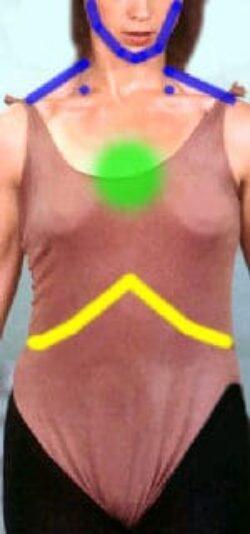
The first gate, (yellow) is located at the physical diaphragm, stands at the place where we move from physical, daily, security concerns, relationships, and self esteem material, into the heart.
The heart zone (green) is about open-heartedness — about compassion — which transforms the passion of the 2nd Chakra into self-less energy.
You might think of true compassion as the strength to “stand with,” without interfering, while supporting.
As an illustration, I did my chaplaincy training at Sick Kids’ Hospital in Toronto, and “stood with” a couple whose child was brain-dead.
I spent many hours with them, listening to their pain, and fantasies, and terror.
They asked me to be there with them, as their daughter was unplugged from life support.
For me enacted compassion was:
1) no platitudes, no dumb lines about “god’s will,” 2) simple presence, which looks like being solid, being ‘right there,’ and 3) making physical contact, and not flinching from the full extent of their grief. Compassion is “fully being with, without attempting to rescue.”Compassion, however, is not the end of our the walk into wholeness, but rather the meeting-place of the physical and the heart.
In Chinese medicine, it’s the meeting place of Earth and Heaven chi. It’s the balance point, and also is the midway point on the journey into full self-hood.
The second gate is at the shoulders and jaw.This gate, when “locked,” blocks us from fully expressing who we are and what is up for us.
I think of this as biting off the “words” of our essential nature, as we repress the compassionate and passionate expression of being. Additionally, this gate keeps us from perfecting our sense of intuition and insight, and blocks our imbibing in the “sea of chi” that surrounds us.
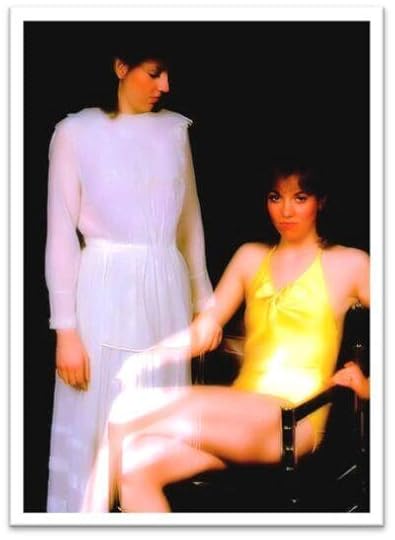 I can’t believe I have it in me…
I can’t believe I have it in me…The mechanism for this repression? The fear of being exposed.
Without flogging the horse, it’s powered by the weight of our earliest training – to fit in, to not make waves, to be a “good boy or good girl.” It’s fueled by, “What will the neighbours think?” It’s maintained by not wanting to look silly or stand out.
That’s the framework.
I once worked with a client who expressed anger over things happening in her family. We looped around that for a bit, and I decided to veer off.
I said, “What was the last thing you did that was completely about your self-growth — that was about your passion for life?”
She grinned, and said, “Besides counselling and Bodywork?”
I thanked her for the complement, and said, “Yeah, besides that.”
She looked sad. “It’s been years. Maybe I should try to be that woman again.”
I replied, “There is no ‘should,’ and you can’t, because you are not her. However, starting now, you could choose to enact more and more of you, and do that until you die.”
This particular client always went home and did what she says she’s going to do, (my definition of integrity, as opposed to talking a good show and then repeating the same old stuff…)
The other thing she did was really let herself go during Bodywork.
Many people won’t do that.They resist feeling and expressing, because they were told, when they were kids, to keep the noise and emotions down. So, they grit their teeth, and barely make a peep. There is tightness is across their jaws, and across their shoulders.
If you’ve been reading my stuff for long, you know the import I give to Bodywork and to letting the sounds, the blocked stuff, out.
The only way through the second gate is the actual expression of the “stuff” inside — and this requires “using your words,” acting with integrity (acting is the only way of showing who you are) and emphatically being willing to let sounds out.
I think that it is impossible to move through the gates we’re talking about without some form of regular Bodywork, and, of course, counselling. The habits of the past are so ingrained that metaphoric dynamite is necessary to break through.
Most people I see are grimly clamped down. Others have smiles on their faces, but the smile looks forced and a bit grim. They talk about feeling well, and getting their act together, but something rings hollow.
The problem is that they are trying to shift perspectives — paradigms — without rocking any boats—they still want to fit in, while pussyfooting around. They learn to talk a good show—to be optimistic, and use positive language, but the sense I get is of a slightly recalcitrant child trying to do what they want without offending their parents.
I think of the kind of transformation I’m discussing here as a complete transformation of body, mind and spirit.In a sense, it’s a leap. The odd thing I see is people trying to leap without letting go of “this side of the leap.” Or trying to leap with a backpack of things strapped on their backs—family rules, family members, old, mouldy beliefs, etc.
Most don’t even try the leap—they just run at the gap and then fall down before they, well, fall down.Others plunge into the abyss, backpack tightly gripped.A few leap, and end up spread-eagled, with one foot on one side, one foot on the other. You know that one’s gotta hurt.Getting to the other side requires the dropping of all of your pre-conceived notions.You sort of land on the other side in a heap, and then have to make sense of the new terrain.
On the other side, the old rules no longer apply.On the other side, there is freedom of self-expression. You choose how and what to do, based upon you and your skill set, as opposed to what others expect you to do.On the other side, the expectations of others seem to be exactly that- the expectations of others - and therefore their issue, not yours.The leap is worth the effort, but it’s such an unknown quantity as to freeze most in place.Yet, the passion and the fire that burns in your belly, even if you are unaware of it, is what the world needs and craves. And, it’s the only way to be yourself, as opposed to a caricature drawn by others.
I can’t believe I have it in me…Facebook TwitterMay 18, 2025
About Embodiment — 12 Ideas

Embodiment — you are all of you — body, mind, and energy. There are ways to empower yourself, to free yourself, to experience “non-holding.”

Living Life in Growing Orbits is our workbook.
52 weeks of daily exercises designed to help you figure yourself out.
Check out Living Life in Growing Orbits
Our approach is quite holistic. My principal goal in life is to be fully engaged with all of me. This is because the only reality you can ever understand — or get your hands on — is your own.
Finding FocusA description of “Zen being”
The essence of Zen is zazen, the act of simply sitting.
Many people want to make a “thing” out of sitting. They do this to accomplish something else — for example, to get relaxed, to recover from an illness, to be “spiritual.”
I remember hearing a woman attempt this process of judgement as opposed to “just sitting” at a Zen Centre Darbella and I attended.
“I have meditated for years, with many, many teachers, and I have never found what I am searching for.“
When asked what the missing ingredient was, she said, “Peace of mind, and mystical visions.”
Most people I know are engaged in a desperate search for the meaning of life — for the reasons behind pain, or tension, or armouring. Most people do not fully engage with anything — they think whatever they are doing is the introduction, the prelude, to something else.
The MindMost are not present for their actual life because they are too busy planning for the imaginary one.I’ve quoted Fritz Perls ’ line, “Go out of your mind, and come to your senses” before.
This is shorthand for what I believe to be so. There is no way to stop ourselves from thinking, plotting, evaluating, judging, blaming. The nature of mind is to think.
However, nothing demands that we take any of it seriously.“Go out of your mind” has two connotations.
to go, or be crazy, andto leave (to step out of) your mind. I suspect a little of both is a good thing.About “Crazy-thinking”One definition of crazy-thinking is thinking completely outside of the normal” box.
For example, when Copernicus declared that the earth orbited around the sun, this was crazy-thinking, as everyone knew that the earth was the center of the universe.
When Pasteur described microbes as causing disease, he was ridiculed.
People want the security of the known, (that things will remain the same), want assurances that (some version of) god is in charge, and “all is right with the world.”
Crazy-thinking is this: I have totally and completely created the universe I live in, initiated and developed all of the stories I have regarding my experiences, and choose everything that goes on inside of me. Crazy, and also true.
About Stepping Out of Mind-ing
Stepping out of your mind is sort of like leaving a room and then turning around and looking back in. You can see what’s going on, but that’s all you can do. You can’t change anything in there, because you are on the outside, simply observing.
Similarly, you can have thoughts without engaging with them. From this perspective, thoughts arise and drift across your mind like clouds across the sky.
Another analogy: picture a clear, still mountain lake. In the lake is reflected the visible sky, and the clouds appear to move across the face of the lake. It seems that the lake contains the sky and the clouds, but it simply reflects them.
What is reflected there seems real, and yet it’s all an illusion. As is all of what we think.We teach a stance of “is-ness,” as in “This is as it is, right now.”
Spending time trying to process “now” is precisely the cause of being non-present. Part of “now” is the thought I think, but the thought is just as fleeting as the rest of our experience. So, we see and hear, feel and emote, without trying to hold on to any of it.
Since we basically hold on with our minds, we loosen our grip there, and “go out of our minds.”
We then come to our senses.Again, two meanings:
to wake up, smarten up, wise up, andto enter fully into the felt-sense of living, breathing, and being.Wasting our lives playing guilt games, blame games, hurting ourselves over past, perceived slights, fearing the future, doubting ourselves — all of these are “senseless” activities. They are not mindless, as the mind is the field for all of them.
When we exit our mind, we “come to our senses,” which metaphorically exists from our necks down.Despite the Western fascination with the mind, with facts, with knowing, we are mostly body. Sensory data comes in and is acted upon, in many cases without our intervention. J
ust ask a runner how her body “does” running — oxygen exchange, processing of waste, placement of feet, etc. Data in, body does its thing.
The realm of the body is where the juice is, literally and metaphorically.
Most people think about their bodies, as opposed to feeling them. We suggest breath and bodywork to teach direct body engaging.
As you “come to your senses,” you begin to feel the vastness that is you. Your breath deepens, and sounds start emerging, seemingly from nowhere. You experience a push on one part of your body, and another part seems to move all on its own.
You suddenly find yourself swimming in a sea of sense-ations, some pleasant, some scary, some deep, some superficial, some chargy, some painful.
You are experiencing you, at your most fundamental level.Here, explanations get in the way (leading you back into your head), so you return to the sea of sensation with each breath. More sound, more vibration, more sense-ual data. You find yourself dancing with your own energy, and in the process releasing decades of blocked, tightened down non-sense.
And you begin to sense, to feel, to experience, the river of energy that flows in the channels of your body.
You are submerged in your-self, and who you really are rises to the surface, and begins to unwrap itself from its self-imposed tightness. The energy rises, and you can feel your connection to everything — to the energy of the earth, to the energy of the universe. There is a sense of oneness, of oceanic depth and peace.
And you may think, “This is it! Wow! Do I ever get this!”Oops. Back in your head again. Go out of your mind, come to your senses. Again and again.
Sit, and just sit. Breathe, and just breathe. Be present, in the moment. As you think about it, let go and do it all again.
This is the rhythm of life we are here to experience. Gently and without judgement.
Everything else is just the set decoration. Non-sense? I think not!
Facebook TwitterMay 11, 2025
About No Past – 12 Ideas

No Past — One of the toughest ‘sells,’ both in therapy and in life, is this: there is no need, nor is there any way, to resolve the issues of the past.
 Looking for more on this topic?
Looking for more on this topic?  Check out my book,
Check out my book,
Half Asleep in the Buddha Hall.
My “Eastern” book takes you by the hand and helps you to find peace of mind.
Half Asleep in the Buddha Hall is a Zen-based guide to living life fully and deeply.
There is not a hope in hell that water, once under the bridge, can be pushed back upstream and filtered until clean. There is letting it go, or letting it own you.
Those who are dead are not dead
They’re just living in my head
And since I fell for that spell
I am living there as well
Oh…
Time is so short and I’m sure
There must be something more
Coldplay Viva La Vida “42”
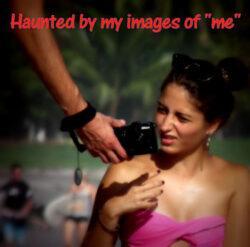
I thought these lyrics were quite appropriate to today’s theme.
The first paragraph is a perfect description of how most people live their lives — not only in their heads, but in there, “playing with (caught under the spell of) things and people ‘dead and gone’.”
It seems to me that each moment is
born, lives, and dies in an instant.
This is how it is for all of us, and for everything.

I was watching a stick of incense today, noticing the stream of smoke arising, and how each second of the burning was different, both in terms of the smoke, and in the infinitesimal shortening of the stick itself.
This seems to be the perfect metaphor for our lives, which pass by similarly. One moment blurs into the next, and you are a year, a decade, or three-quarters of a century older.
We do not notice time’s passing as it’s passing, but more like the incense stick, notice when it’s spent, used up, burnt out.
We miss the smoke rising — the moment-by-moment experiencing of life — because we are mostly up in our heads, playing with ghosts — regretting things we did, relationships and people that left, died, moved on.
We play with the ghost of “Christmas future” — our fevered imaginings about what is going to happen.
We make up stories involving others, assign the parts, write the dialogue, and then, with great pomp and ceremony, enter into the dream-scape drama we have created, there to play out alternate scenarios to what really happened.
I firmly believe that such a life is a monumental waste of time, as is hoping that “there must be something more.”This fragment of the above lyric is often the idea or desire that brings clients to counselling.

It’s sort of a half-eye-open look at the “streaming by” of one’s life that causes the “there must be more to life than what I am experiencing” reaction.
The odd piece is that there is more to it — it’s called moment-by-moment experiencing.
The cure, such as it is, is right there, in front of your nose.
The cure is letting the past be the past, and dealing with the future when it actually arrives, thus freeing oneself to be alive, in this moment.
The past is the past
You can’t un-ring a bell, they say. Nor can you push the river of time (or any other river, unless you’re in Chicago”) upstream.
While it may seem only to be semantics, you cannot mend the past. You can only deal with the present moment. Making amends, for example, does not change the past situation one iota — it changes the relationship between you and “whatever” in the here-and-now.
Most people do not “make amends” in the real world — they do it up in their heads, in the form of “If only I had said such and such, things would have turned out different.”
Or, “If only I hadn’t married him, I’d be happy.”
Or, “If only my parents had treated me differently, then I wouldn’t be this way.”
Of course! If things had been different, things would be different. However, you did say such and such, you did marry him, and your parents did treat you as they treated you.”
Nothing can change your past experience;it’s what led to your present reality.
The only way out of the pattern of second guessing the past and dreaming about the future is to let go of clinging to either. This is done by, first of all, watching the games you play in your head, without joining in.
Getting caught “in the head spell” is a sure recipe for feeling like crap while staying deeply stuck.
Instead, we begin to explore the process, instead of the content. We start to notice how we are “camping out” in our heads, playing “remember when!” games. As we notice, we can gently but firmly let go of the drama, open our eyes to the present moment, and see what’s really happening.
This also serves the purpose of actually providing ourselves with a life — precisely the one we have, which has been rushing by unnoticed.
When we live in this moment, life seems to be endless. And interesting, because we are experiencing one thing and one thing, and then another thing, without attaching to any of it.
Without trying to keep dead moments alive.You can live your life as a ghost, rarely immersing yourself it, and only judging it as it passes quickly by. Or, you can let the stream roll, let people, places, and things be how they are for as long as they are present, and then let them go, without attachment.
You can. It’s a challenge to beat ourselves at our own games, but you can.
Excellent therapy, elegant bodywork, and meditation are the tools for this exploration. More about this next week, as we conclude this series.
Facebook TwitterMay 4, 2025
About Happiness – 12 Ideas

About Happiness — The key to happiness and contentment: happiness is determined by your intention.

Living Life in Growing Orbits is our workbook.
52 weeks of daily exercises designed to help you figure yourself out.
Check out Living Life in Growing Orbits
The key to happiness and contentment is
determined by your intention.
This was one of those “Of course!” moments for me. I realized that one could analyze the first two (happiness and contentment) only on the basis of the last one (intention). But it’s a bit complicated, so let’s unpack.
You have to listen to me…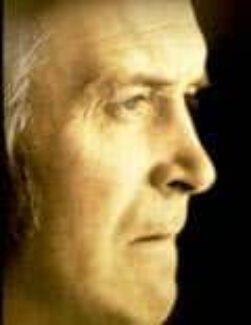
I ask a father, “What is your intention for your kids?”
He replies, “I want them to be happy.”
I ask, “What does happiness look like?”
He: “They listen to me and do what they are told.”
Me: “How do you get them to listen and to obey?”
He: “I yell at them, until they do what I want them to.”
Me: “Are they happy, and are they doing what you want?”
He: “No, so I yell louder.”
Me: “Are you happy / content?”
He: “No. but a father has to sacrifice for his kids.”
And on and on.
Most people have not unpacked their intentions, and have no clue what happiness / contentment looks like for them.
They are sure, however, that it involves someone or something outside of themselves doing things differently.By the bye, the wife of the above guy told me she wouldn’t be happy until he stopped yelling at the kids, and besides, she wasn’t sure why she married him in the first place. But had to stay, “For the kids.”
I did this same dance with my therapist back in 1996, when she asked me if I was happy, and I replied with a list of things I needed first. She said, “OK, you have those things. Are you happy?”
I came up with another list.
Moral of the story? I was fixated on the things I needed to eventually by happy / content, and the list always led to… you guessed it… more lists.I had to learn what I call the “lesson of presence.” When I brought my attention from lists and future happiness, I became aware that I was doing well, right now.
I’ve come to the conclusion that what’s really necessary is a relentless, 100% commitment to being present.And a chief aspect of presence is knowing, with crystal clarity, what games I am playing with myself.

In the dad’s case, above, I’m sure he was used to most people letting up on him after he said he wanted his kids to be happy, to listen, and to be well behaved.
Most people hear platitudes like that and drop the enquiry.
Indeed, most people drop the enquiry as they bump up against their own, flawed platitudes.
One client decided not to be depressed any more. I replied that she’d have to endlessly pay attention to her moods. This wasn’t pleasing to her, as she thought that simply deciding not to be depressed should fix everything.
Paying attention to how she depressed herself wasn’t interesting to her. Because of this, her actual intention was to pretend she was “cured” while ignoring herself, her way of being, and her moods.
In each case, there is the story we tell ourselves (and others) and what lies beneath it—the real story.In the dad’s case, the hidden story was, “Dads keep their kids in line by yelling at them—otherwise, they are out of control.”
Most people don’t examine this hidden story or motivation, and since they hide it from themselves, they can’t understand why their platitudes (“I want my kids to be happy”) never come true.
A 100% commitment to self discovery requires that we challenge our platitudes, to see what props them up.People tell me the latest disaster story, and totally miss that the story is just the latest in a long string of the same story.
Many people I know, for example, are “fixers.” They assure me that they will be content when the present “fix” takes hold.
However, they miss that “fixers,” by definition, need someone or something to fix.
So, even if the fix takes, if they continue to be a “fixer,” they have to create something new to fix, or break something they already fixed. Just to have something to do.
And since happiness and contentment, for them, hinges on the platitude of having everything fixed, (while umconsciously continuing to break stuff,) they never get to “there.”
Our approach to all of this is relentless self-examination and here-and-now living.The key is contained in the words self, and here-and-now.
Either alone or with a therapist, you must get a handle on your stories, dreams, wants, and evasions. In other words, all of those external things you blame for how you are need to be let go of, and then set aside.
For example, with the dad, above, the work was at the level of the final belief: in his case, “My job is to yell at the kids until they obey.”
You narrow it down: “I must fix everyone.” “All men leave me.” “I need everyone to love me and think I’m wonderful.” Whatever.
Once you get to the bottom of the stories, you’ll see that you have a belief about how others (things or people) ought to be, and will see that you are repeating this theme over and over, and never getting anywhere with it.
Once you see what you are doing, you can take responsibility for it, and then ask, “What can I do, right now, to bring peace, contentment, and happiness to my life?”
If your answer has anything to do with something outside of yourself and in some time-frame other than now, go back to the drawing board.
In the end, it’s all about discovering your own level of commitment to your walk–your path–and your level of happiness and contentment. This begins by understanding that happiness and contentment are self-determined, 100% of the time.
It’s your walk, your path, and if you are bogged down, you walked into the bog.Ultimately, it is possible to get to the point of Simple Presence, that state of grace where you just are. No goals, no things, and others to fix, just being in the moment and appreciating the moment for what it is. Nothing to do, nothing to eventually become.
This is living at its finest.
Facebook Twitter


